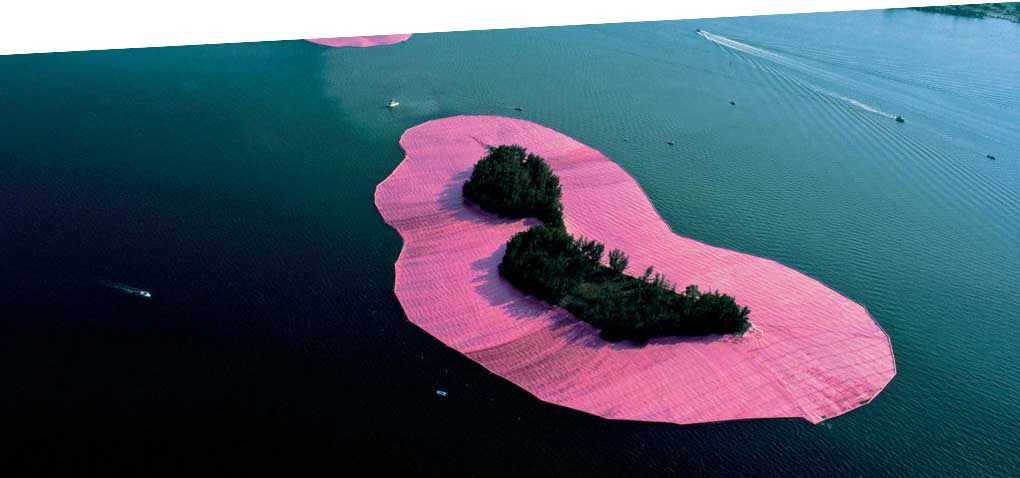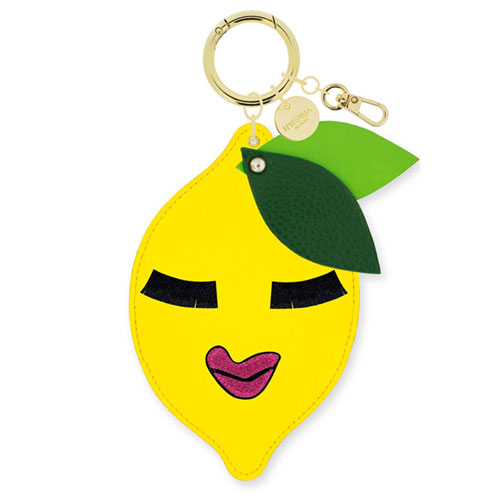
Christo and Jeanne-Claude
Surrounded Islands, Biscayne Bay, Greater Miami, Florida, 1980-83
Photo: Wolfgang Volz
© 1983 Christo
Having lived in London for 18 months, I have taken every chance to visit art and design exhibitions. Mostly, I was confronted with fashion and photography shows. However, what I had missed was a happening around packaging as the outer appearance of a product is just as polarising as the product itself. As a matter of fact, packaging communicates and interacts with its surrounding and presents itself from different perspectives.
A cruise through the realm of design and art shows that a lot of different performers incorporate packaging as part of their art. Whether they suggest critique, irony, or modernity and extravaganza, truth is, their messages are as diverse as their characters.
Packaging gets in fashion
It’s no surprise anymore, a lot of designers put their style on packages of famous brands. While Alber Elbaz (Lanvin) applied his typical scribbles on the folding boxes of beauty brand Lancôme, Matthew Williamson turned a range of cosmetic boxes from Benefit into a limited Boho-paradise and Craig & Karl, an artist duo, made the Kiehl's box more beautiful.
Yet, it also works the other way around. Obviously, more and more often fashion gets inspired by the packaging industry. At least that’s what the latest hand bag trend by Moschino and Anya Hindmarch suggests: A pack of McDonald’s french fries gets catwalk-presentable and a Kellogg’s pack turns into a fashion must have.
Even Karl Lagerfeld brought back packaging on the stage. One of his Chanel shows was literally transformed into a big supermarket with Chanel branded products. From Lait Coco to Coco Cookies, the store had everything a product designer could dream of. The motto: Include the everyday into the world of luxury.
Packaging meets pop art
Who’s not familiar with Andy Warhol's works? The man who propelled the pop art movement had a thing for packaging and painted not less than 32 canvases with his favourite food at the time – Campbell’s soup. To evoke a supermarket feeling and to mirror the Zeitgeist of mass consumption, Warhol put his paintings in a shelf for display. No surprise, he called his studio a ‚factory’ continuously producing art work.
Packaging - Wrap to reveal
Christo and Jeanne-Claude rather focus on exposure than on consumption. Ironically, by concealing an object they intend to show its basic features. Wrap to reveal so to say. The choice of material that encapsulates objects such as the Reichstag, the Pont Neuf or the even the isles of Florida, is essential of in the process. Like that, the famous artist couple actualised huge installations at famous locations all over the world.
Packaging - A wasteful game
Alejandro Duràn offers a complete different approach. His project „Washed Up: Transforming a Trashed Landscape” integrates washed up waste into nature in order to draw attention to our contact with the world. His installations feel calm and natural, yet loud and disturbing at the same time. A weird beauty, that makes one ask yourself: May trash be beautiful?
Conclusion
In the end, what do all these examples teach us? Packaging is a medium that can inspire, reflect and deliver critique, even against itself. It is not just empty shell, but a valuable tool for communication and henceforth it deserves to be seen.









